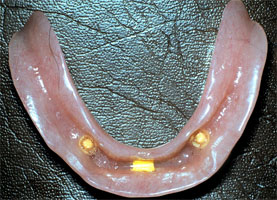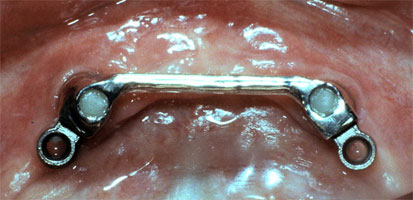Gold Foil
Click here for information on Gold Restorations.









Gold Inlay
Click here for more information on Gold Restorations.
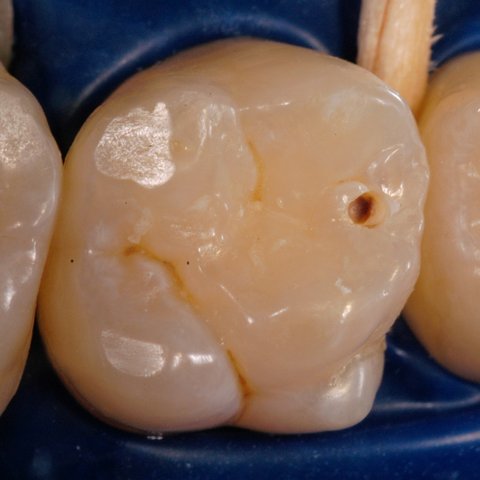
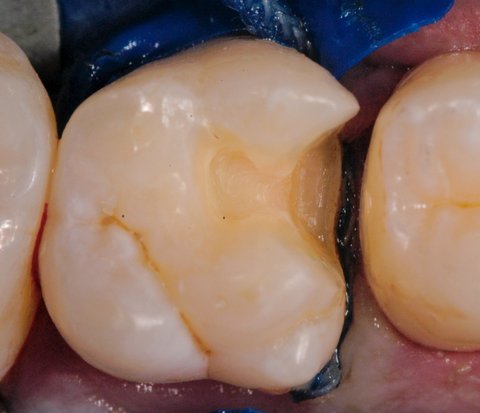
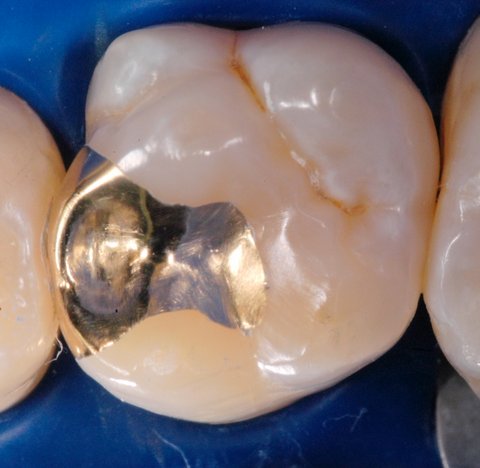

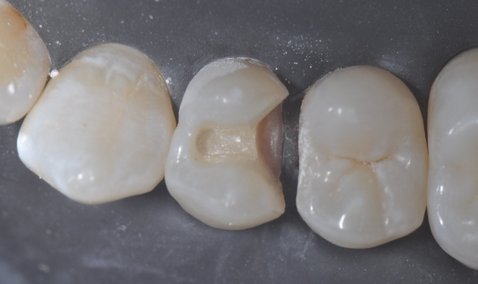

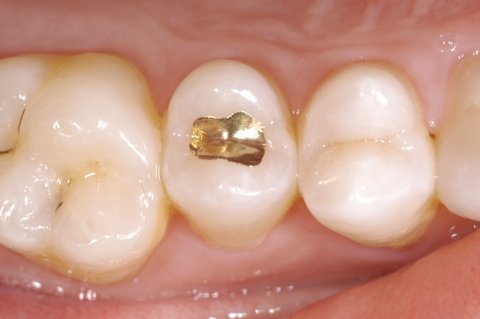
Silver Amalgam Restoration:
Much of the dentistry that we do is simply to repair or replace previously done dentistry which is no longer serviceable. Here is an example of some old silver amalgam restorations which, as you can see, have fractured.
Ideally, these restorations would be best replaced with gold, or a ceramic material, however for economic reasons the patient elected to simply replace them again with amalgam. Although they will likely discolor with time, these new restorations should provide many years of successful function.

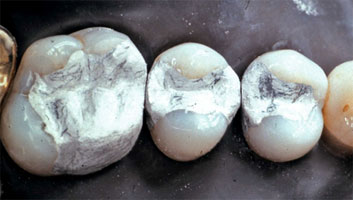
Incidentally, the grey background that you see is a rubber dam, which is used to aid in isolation and provide better visibility for the dentist during the restorative procedure. It protects the patient from inadvertent injury from aspiration or swallowing debris or restorative materials.
Ceramic Restorations

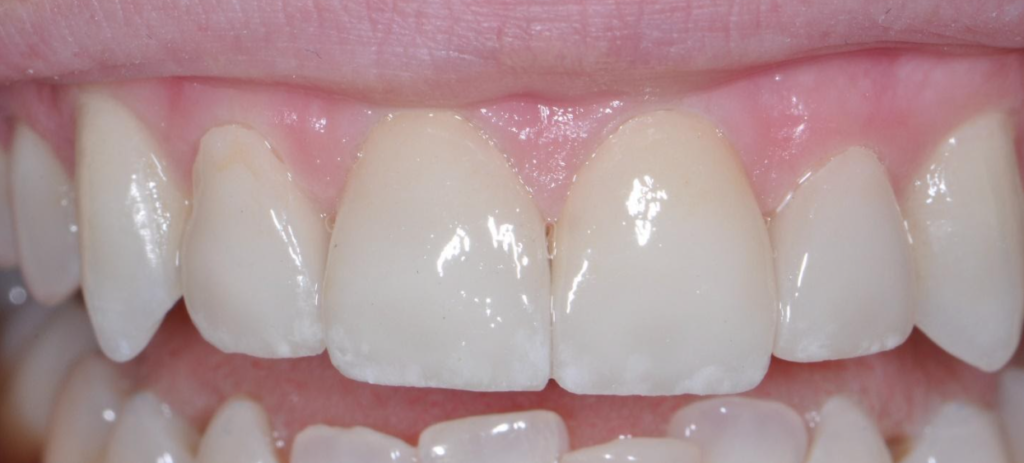
This patient was a student of veterinary medicine who suffered a kick in the mouth while learning large animal medicine. The four front teeth were all fractured, and restored with composite resin. After entering the military, crowns were placed on the central incisors. The patient wasn’t pleased with the color match, so we did all four front teeth with all-ceramic crowns.
The result was quite pleasing esthetically. Notice the subtle color gradient compared to the central incisor crowns in the previous photo. A little custom staining can make all the difference in creating life-like results.
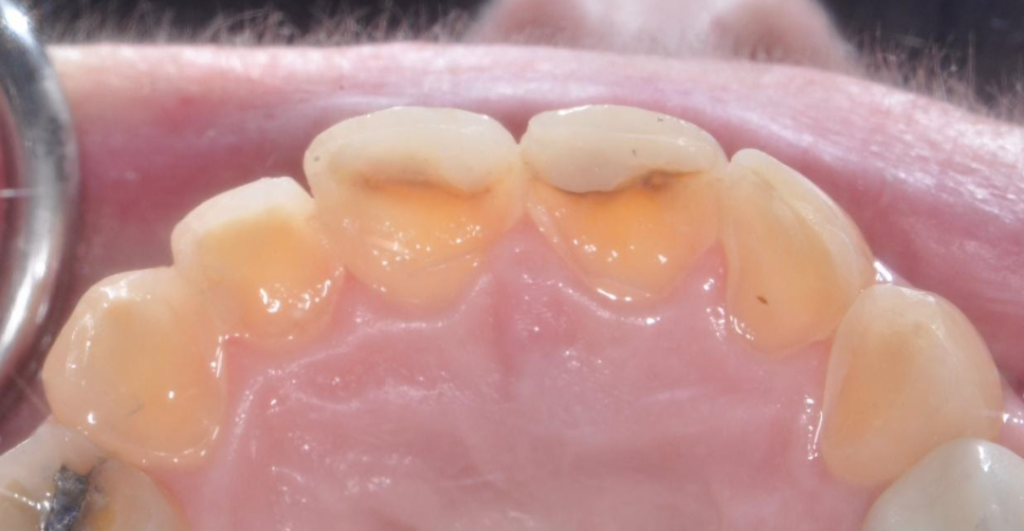
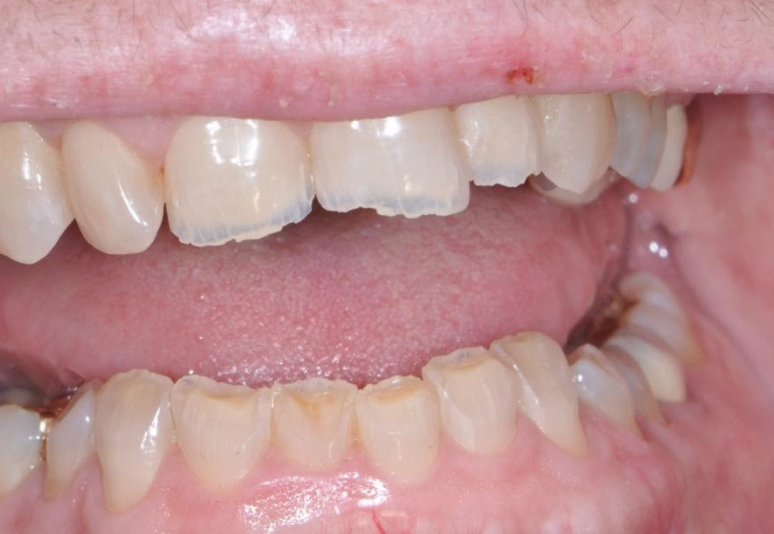
These two photos show the front view, and the back side of six front teeth damaged by excessive chemical erosion. This is a common result of chronic gastric reflux, and sometimes the excessive consumption of carbonated soft drinks. In reflux, the damage is generally seen on the back of the front teeth, and with soft drinks, more generalized throughout the mouth.

With all-ceramic crowns, we were able to restore the original smile line that had been broken down by the acid. Again, notice the gradient of color from the gum line to the biting edge of the teeth. This is important in creating teeth that do not appear artificial.
In addition, during the restorative process, we created a new bite relationship that will allow for the future restoration and realignment of the worn lower front teeth. (See 2nd pre-op photo)
Replacement of Central Incisor:
Perhaps the greatest esthetic challenge that any dentist can face is the restoration of a single central incisor. There are so many factors which must be addressed to achieve an acceptable result, including but not limited to shape, color, optical properties of the restorative material, and soft tissue health. This young man had a previously restored central incisor using technology from the 1960’s which involved a plastic facing on a gold core. As you can see, the plastic has worn away revealing much of the underlying structure.
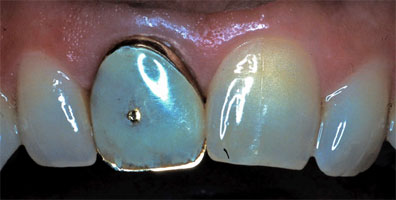
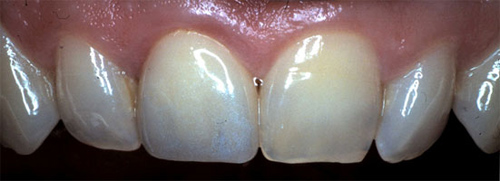
The replacement was done with an all-ceramic material. Note the exact mirror-image of the replacement to the natural incisor. Also note the subtle variety of colors in the natural tooth and the ceramic. Lastly, note the health of the gum around the crown.
Implants
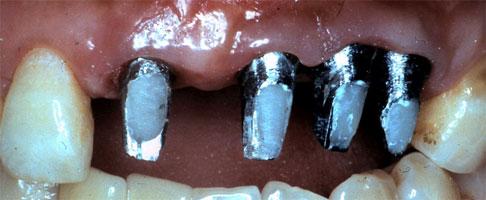
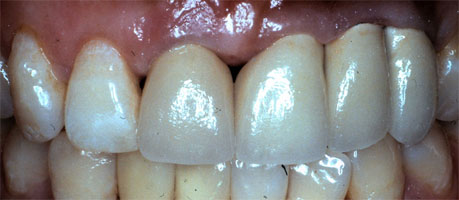
We are sometimes faced with severe aesthetic challenges as a result of trauma. This unfortunate young lady was the victim of an auto accident resulting in the loss of four upper front teeth along with a substantial amount of bone.
The young man in the following pictures sustained severe bone loss in an accident that his lip line would not adequately hide. Since bone grafting in his case was not predictable, we elected to use tissue-colored porcelain to avoid the necessity for un-naturally long teeth.


What about the use of implants in patients who are totally edentulous (without any natural teeth)? Depending upon the amount and quality of the remaining bone structure, there are many treatment options available the use of implant technology. The simplest is the use of one two or more implants used to support an “over” denture. The denture is removable, but when in place it is supported by and attached to the implant substructure by simple snap attachments. The first photo shows the implants connceted by a support bar. The second photo shows the inside of the denture which holds the snaps which attach to the bar.
